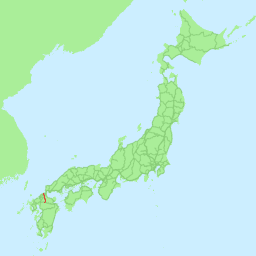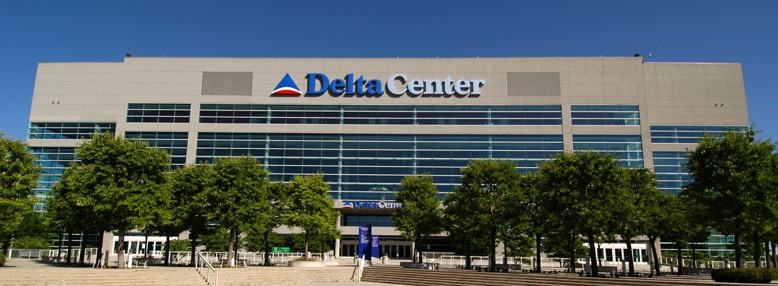|
Tagawa-Ita Station
is a railway station in Tagawa, Fukuoka, Japan, operated by Kyushu Railway Company (JR Kyushu) and Heisei Chikuhō Railway. On 1 April 2009, discount shop chain MrMax acquired naming rights to the Heisei Chikuhō part of the station. Therefore, the station is alternatively known as . Lines Tagawa-Ita Station is served by the Hitahikosan Line. It is also served by the Heisei Chikuhō Railway Ita Line and Tagawa Line. Adjacent stations See also * List of railway stations in Japan The links below contain all of the 8579 railway stations in Japan. External links {{Portal bar, Japan, Trains * Railway stations A train station, railway station, railroad station or depot is a railway facility where trains stop to ... References External links * * Railway stations in Japan opened in 1895 Railway stations in Fukuoka Prefecture Tagawa, Fukuoka {{Fukuoka-railstation-stub ... [...More Info...] [...Related Items...] OR: [Wikipedia] [Google] [Baidu] |
JR Logo (kyushu)
JR, J. R. or Jr. may refer to: * Jr. or Junior (suffix), a name suffix Arts and entertainment * ''J.R.'' (album), an album by Jim Bob * ''J R'', a 1975 novel written by William Gaddis * "Jr.", a song by Codeine on the album ''Barely Real'' * J. R. Ewing, a television character from ''Dallas'' * JR Chandler, aka Adam Chandler Jr, a television character from ''All My Children'' * ''Jornal da Record'', a Brazilian news program on RecordTV Businesses and organizations * Aero California, defunct Mexican airline by IATA code * Japan Railways Group or the JR Group, the main operators of the Japanese railway network * Jember railway station * John Radcliffe Hospital * Joy Air, Chinese airline by IATA code People In arts and entertainment * JR (artist) (born 1983), French artist * J.R. (musician) (born 1979), American Christian musician and producer * JR (rapper) (born 1987), South African rapper and entrepreneur * ''J. R.'' a pen-name of writer John Ruskin * ''Jr.'', stage name of Par ... [...More Info...] [...Related Items...] OR: [Wikipedia] [Google] [Baidu] |
JR Kyushu
The , also referred to as , is one of the seven constituent companies of Japan Railways Group (JR Group). It operates intercity rail services within Kyushu, Japan and the JR Kyushu Jet Ferry Beetle hydrofoil service across the Tsushima Strait between Fukuoka and Busan, South Korea. It also operates hotels, restaurants, and drugstores across its service region. JR Kyushu's headquarters are in Hakata-ku, Fukuoka. ." Kyushu Railway Company. Retrieved on March 27, 2010. History When was divided in 1987, Kyushu Railway Company inherited its assets and operations on the island of |
Heisei Chikuhō Railway Logo
The is the period of Japanese history corresponding to the reign of Emperor Emeritus Akihito from 8 January 1989 until his abdication on 30 April 2019. The Heisei era started on 8 January 1989, the day after the death of the Emperor Hirohito, when his son, Akihito, acceded to the throne as the 125th Emperor. In accordance with Japanese customs, Hirohito was posthumously renamed "Emperor Shōwa" on 31 January 1989. Thus, 1989 corresponds to Shōwa 64 until 7 January, and from 8 January. The Heisei era ended on 30 April 2019 (Heisei 31), with the abdication of Akihito from the Chrysanthemum Throne. It was succeeded by the Reiwa era as then-crown prince Naruhito ascended the throne on 1 May midnight local time. History and meaning On 7 January 1989, at 07:55 AM JST, the Grand Steward of Japan's Imperial Household Agency, Shōichi Fujimori, announced Emperor Hirohito's death at 6:33 AM JST, and revealed details about his cancer for the first time. Shortly after the d ... [...More Info...] [...Related Items...] OR: [Wikipedia] [Google] [Baidu] |
Heisei Chikuho Railway
The is the period of Japanese history corresponding to the reign of Emperor Emeritus Akihito from 8 January 1989 until his abdication on 30 April 2019. The Heisei era started on 8 January 1989, the day after the death of the Emperor Hirohito, when his son, Akihito, acceded to the throne as the 125th Emperor. In accordance with Japanese customs, Hirohito was posthumously renamed "Emperor Shōwa" on 31 January 1989. Thus, 1989 corresponds to Shōwa 64 until 7 January, and from 8 January. The Heisei era ended on 30 April 2019 (Heisei 31), with the abdication of Akihito from the Chrysanthemum Throne. It was succeeded by the Reiwa era as then-crown prince Naruhito ascended the throne on 1 May midnight local time. History and meaning On 7 January 1989, at 07:55 AM JST, the Grand Steward of Japan's Imperial Household Agency, Shōichi Fujimori, announced Emperor Hirohito's death at 6:33 AM JST, and revealed details about his cancer for the first time. Shortly after the deat ... [...More Info...] [...Related Items...] OR: [Wikipedia] [Google] [Baidu] |
Hitahikosan Line
The is a railway line in Japan, operated by Kyushu Railway Company (JR Kyushu). It connects Jōno Station in Kitakyushu, Fukuoka Prefecture with Yoake Station in Hita, Ōita Prefecture and features the 4380 m Shakadake Tunnel between Chikuzen Iwaya and Hikosan station, where a fatal tunnel collapse occurred during construction in 1953, killing 21 construction workers. The line is named after Hita and Mount Hiko. Stations :●: Stops, |: non-stop History The Toyo-shu Railway Co. opened the Tagawa-Ita - Buzen Kawasaki section as part of the Tagawa Line in 1899. That company merged with the Kyushu Railway Company in 1901, which extended the line to Soeda in 1903. The company was nationalised in 1907. The Jono - Tagawa-Ita section was opened in 1915 by the Kokura Railway Co., that company being nationalised in 1943. The Soeda - Daigyoji section opened between 1937 and 1946, and the Daigyoji - Yoake section opened in 1956. CTC signalling was introduced on the entire line in 1 ... [...More Info...] [...Related Items...] OR: [Wikipedia] [Google] [Baidu] |
Ita Line
The is a 16.1 km railway line owned by the third-sector company Heisei Chikuhō Railway. The line runs north from Tagawa to Nōgata, all within Fukuoka Prefecture. History The line was first built by the Chikuhō Kōgyō Railway, later renamed , as a branch line of the Chikuhō Main Line. Used to transport coal from the Chikuhō coal mine, the line had two stations: Nōgata Station and Kanada Station. The entire Chikuhō Railway system was merged in 1897 with Kyushu Railway, where the line was extended to Ita Station (now Tagawa-Ita Station) in 1899. Kyushu Railway was nationalized in 1907 and was merged into Japanese Government Railway. Even though the Ita Line was widened to a double-track railway in 1911, ridership suffered with the decline of the Chikuhō coal mine. Therefore, JR Kyushu, the successor of Japanese Government Railway, privatized and transferred the Ita Line, Itoda Line, and Tagawa Line to the newly founded Heisei Chikuhō Railway. Even after privatiz ... [...More Info...] [...Related Items...] OR: [Wikipedia] [Google] [Baidu] |
Tagawa Line
The is a 26.3 km railway line owned by the Heisei Chikuhō Railway. The line runs west along the Ima River from Yukuhashi to Tagawa, all within Fukuoka Prefecture. History The line was first built in 1895 by the , which was merged in 1901 with Kyushu Railway. It was an important railway line to transport coal between the Chikuhō coal mine with in Kanda, north of Yukuhashi. Kyushu Railway was nationalized in 1907 and was merged into Japanese Government Railway, where it was named the Tagawa Line. In 1942, the line was extended south from Ita Station (now Tagawa-Ita Station) to Hikosan Station. The portion between Hikosan and Soeda Station was later reorganized into the Hita Line (now Hitahikosan Line) in 1956, and the section between Soeda and Ita was also merged into the same line in 1960 to form the current Tagawa Line. Between 1899 and 1973, a short freight-only branch line ran north from Kawara Station (now Magarikane Station) to Natsuyoshi. Ridership suffered w ... [...More Info...] [...Related Items...] OR: [Wikipedia] [Google] [Baidu] |
Tagawa, Fukuoka
is a city located in Fukuoka Prefecture, Japan. The city was founded on November 3, 1943. As of October 1, 2018, the city has an estimated population of 48,241, with 24,537 households. Its total area is 54.52 km². Tagawa was historically a coal mining city, and is easily recognizable by its two tall chimneys located near Tagawa-Ita (田川伊田駅). Currently active industries in Tagawa include limestone and cement production. Tirol (チロル) miniature chocolates are manufactured in Tagawa. The TRIAL Kyushu warehouse is located in Ita-machi, and services TRIAL discount stores in all prefectures in Kyushu. Tagawa is serviced by two main JR stations, Tagawa-Ita (田川伊田) and Tagawa-Gotōji (田川後藤寺). These stations provide transport links to Kokura, Hita, and Shin-Iizuka via the Hitahikosan Line (日田彦山線) and Gotōji Line (後藤寺線). In addition, the private rail company Heisei Chikuho Railway Line (terminal points: Yukuhashi and Nōgata ... [...More Info...] [...Related Items...] OR: [Wikipedia] [Google] [Baidu] |
Kyushu Railway Company
The , also referred to as , is one of the seven constituent companies of Japan Railways Group (JR Group). It operates intercity rail services within Kyushu, Japan and the JR Kyushu Jet Ferry Beetle hydrofoil service across the Tsushima Strait between Fukuoka and Busan, South Korea. It also operates hotels, restaurants, and drugstores across its service region. JR Kyushu's headquarters are in Hakata-ku, Fukuoka. ." Kyushu Railway Company. Retrieved on March 27, 2010. History When was divided in 1987, Kyushu Railway Company inherited its assets and operations on the island of |
Heisei Chikuhō Railway
The is a third-sector operator of four railway lines in Fukuoka Prefecture, Japan. The railway's nickname is ''Heichiku.'' Principal investors Fukuoka Prefecture holds 27.5% of the stock in the railway. The cities of Tagawa, Nōgata, and Yukuhashi hold 14.8%, 6.6%, and 6.6% each. Lines *Ita Line (16.1 km) - The Nogata to Kaneda section opened in 1893, and the Kaneda to Tagawa-Ita section in 1899. The line was double-tracked in 1911, and freight services ceased in 2004. *Itoda Line (6.8 km) - The Tagawa-Gotoji to Itoda section opened in 1897 to haul coal and the Itoda to Kaneda section opened in 1929 to service a cement plant. *Tagawa Line (26.3 km) - The entire Tagawa-Ita to Yukuhashi line opened in 1895. * Mojikō Retro Kankō Line (2.1 km) - The Mojiko to Moji Harbour line opened in 1929, and freight services ceased in 2004. Despite a significant landslide in 2006, the line was reopened as a tourist line in 2009. The Mojikō Retro Kankō Line is classi ... [...More Info...] [...Related Items...] OR: [Wikipedia] [Google] [Baidu] |
Discount Shop
A discount store or discounter offers a retail format in which products are sold at prices that are in principle lower than an actual or supposed "full retail price". Discounters rely on bulk purchasing and efficient distribution to keep down costs. Types (United States) Discount stores in the United States may be classified into different types: Hypermarkets (superstores) Discount superstores such as Walmart or Target sell general merchandise in a big-box store; many have a full grocery selection and are thus hypermarkets, though that term is not generally used in North America. In the 1960s and 1970s the term "discount department store" was used, and chains such as Kmart, Zodys and TG&Y billed themselves as such. The term "discount department store" or "off-price department store" is sometimes applied to big-box discount retailers of apparel and home goods, such as Ross Dress For Less, Marshalls, TJ Maxx, and Kohls. Category killers So-called category killer stores, speciali ... [...More Info...] [...Related Items...] OR: [Wikipedia] [Google] [Baidu] |
Naming Rights
Naming rights are a financial transaction and form of advertising or memorialization whereby a corporation, person, or other entity purchases the right to name a facility, object, location, program, or event, typically for a defined period of time. For properties such as multi-purpose arenas, performing arts venues, or sports fields, the term ranges from three to 20 years. Longer terms are more common for higher profile venues such as professional sports facilities. The distinctive characteristic for this type of naming rights is that the buyer gets a marketing property to promote products and services, promote customer retention and/or increase market share. There are several forms of corporate sponsored names. For example, a ''presenting sponsor'' attaches the name of the corporation or brand at the end (or, sometimes, beginning) of a generic, usually traditional, name (e.g. Mall of America Field at Hubert H. Humphrey Metrodome); or, a ''title sponsor'' replaces the origin ... [...More Info...] [...Related Items...] OR: [Wikipedia] [Google] [Baidu] |


b.jpg)



